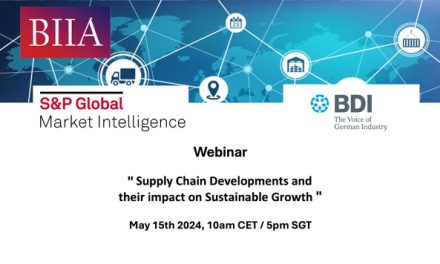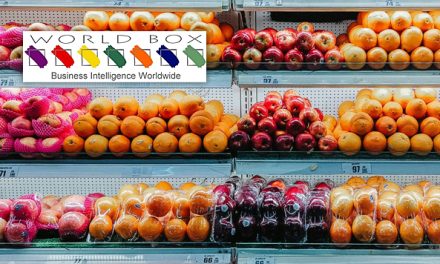The UN Climate Conference held in November 2022, known as COP27, presented an opportunity to refocus international attention on the challenge of financing climate change initiatives. According to the Climate Bonds Initiative, an international organization working to mobilize global capital for climate action, in the first six months of 2022 about US$380bn was invested globally in thematic bonds (green, social and/or sustainability).
During that same time frame, Latin America represented 3.6% of that global issuance, or US$13.7bn. Although Latin America has lagged behind the US and numerous European countries, the Latin American thematic bonds market has grown over 159% from 2014 to 2021. Latin America, including, Brazil, Chile, Peru and Colombia, has vast, untapped potential to issue thematic bonds, particularly given the significant amount of resources needed to address environmental, social or corporate governance (collectively, “ESG”) shortfalls or challenges in the region.
That said, the Latin American thematic bonds market faces significant headwinds and challenges, including political and economic risk, recessionary pressures, and the absence of clear regulatory and other guidelines governing these bonds. This article focuses on the issues created by the absence of a bright-line legal and regulatory framework and proposals to address those issues.
Despite the solid consensus in favor of expanding sustainable financing alternatives, Latin American companies and governments continue to face multiple challenges in accessing these types of bonds. For example, issuers of thematic bonds must navigate multiple frameworks and guidelines (e.g., the Green Bonds Principles), reporting standards (e.g., the Global Reporting Initiative), and classifications (i.e., green, climate, social, blue, sustainability, and sustainability-linked).
The Latin American thematic bonds market lacks a centralized or customary approach and the availability of numerous options increases transaction costs, delays processes, and often generates decision paralysis. While this may be considered a theoretical issue, our experience with some of Latin America’s largest companies shows that it is very much a real concern. Recently, a large regional energy conglomerate interested in issuing thematic bonds was unable to do so in part due to the multitude of differing and, in some instances, conflicting menu of options available.
Take, for instance, a multinational company with operations in Brazil, Mexico and/or Peru that is interested in tapping the sustainable finance market. At the outset, this company would need to reconcile multiple country-specific guidelines, namely Brazil’s “Guidelines for Issuing Green Bonds,” Chile’s “Guidelines for Green and Social Bonds,” Mexico’s “Green Bond Principles MX,” and Peru’s “Green Bond Guide.”
Further complicating the structuring is the reconciliation with ongoing update and evolution of existing guidelines in Latin American countries. As a case in point, in 2022, Colombia introduced the “Green Taxonomy” and the “Reference Framework for the Issuance of Green, Social and Sustainability Sovereign Bonds.” The extent to which these various guidelines overlap or conflict is beyond the scope of this article, but it further underscores our contention that the absence of a centralized or unified regulatory framework increases uncertainty and transaction costs for our hypothetical issuer.
Scaling up sustainable finance (globally, but particularly in Latin America) will require overcoming the challenges arising from such a wide range of ESG frameworks and standards. Standardization has long been recognized as a key element for developing financial instruments, as it significantly increases market transparency and credibility. In the thematic bonds market specifically, uniformity can also help reduce the risk of “sustainability-washing” (green washing) and decrease the cost of capital for ESG projects, thereby further enlarging the amount of issuances.
There has been progress in that regard. In 2020, the World Economic Forum, along with the Big Four accounting firms, unveiled the Stakeholder Capitalism Metrics, proposing a set of standardized measurements. Similarly, in 2022, the IFRS Foundation and Global Reporting Initiative agreed to advance the harmonization of international sustainability systems. These initiatives aim to promote standardization through interconnected reporting standards. If proven to be effective, the ensuing uniformity is expected to foster reliable and efficient instruments to facilitate investors’ participation in the sustainable finance market.
That said, a complete standardization of ESG standards is likely unrealistic given the disparate local and regional objectives in Latin America and the various different stages of ESG and sustainability maturity and integration for each country. Thus, it is clear that in the near- and medium term disparate frameworks and standards will likely continue to be a defining characteristic of the Latin American sustainable finance landscape. In other words, even if the level of standardization is improved, it may never be absolute.
Based on our experience, the following is a three-step roadmap to assist companies and governments that are interested in issuing thematic bonds in Latin America:
First, the issuer should select an ESG framework (set of principles to guide the implementation of ESG initiatives) that is generally accepted in its target market (i.e., a framework approved by target potential investors and that is consistent with the industry and geographical footprint of the target issuer).
Second, the target issuer will need to define the specific projects it wants to finance with the thematic bond proceeds. The project(s) will need to fall within the purview of the applicable ESG framework selected in step 1 and must be aligned with or otherwise foster the target issuer’s general business plan or objectives. The target project(s) should be aligned with the applicable taxonomy (i.e., green, social, etc.), which will help shape the structure of the bond in terms of use of proceeds, pricing, and other bond covenants. At this stage, target issuers will benefit from the counsel and guidance of numerous experts, including financial advisors, ESG consultants, and international legal counsel.
Third, in consultation with potential target investors, the target issuer should determine the ESG reporting standards that best align with the nature of the proposed target project(s) and the target issuer’s own ESG objectives. This is a fundamental aspect of any thematic bonds issuance because it will enable the target investor market to assess whether the target issuer is furthering its ESG objectives with the proposed thematic bonds issuance. Many target issuers also select a standard that allows their projects/bonds to be ranked by ESG ranking services (e.g., the S&P Dow Jones Indices).
This approach, at a minimum, should allow issuers to have a clearer roadmap for successfully issuing thematic bonds and position Latin America as a relevant market participant due to its competitive advantages derived from, among other things, immense natural resources and renewable energy potential.
Despite various country and regional challenges, such as political uncertainty and turmoil, rising interest rates, recessionary headwinds, and volatile financial markets, we expect Latin American sustainable finance to continue growing, maturing, and attracting even greater interest from international investors. In part, this interest will be driven by the increasing demand from US and global climate funds, but also strategic country-specific public policies encouraging sustainability initiatives, such as energy transition, sustainable agriculture, and e-mobility. We are excited that the thematic bonds market will bring significant and measurable benefits to Latin America.
Source: Mondaq.com [Originally Published by BNAmericas.]


























